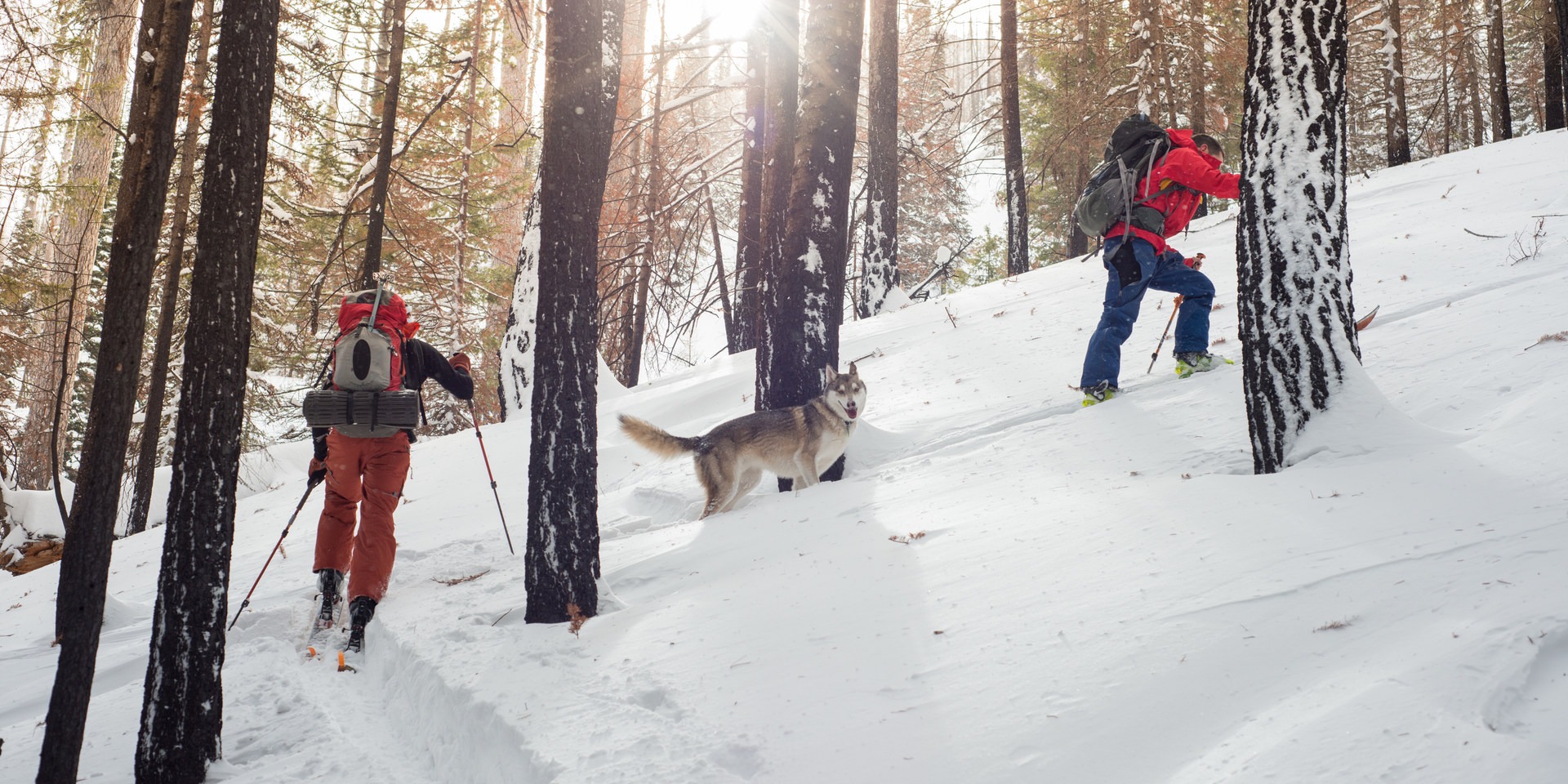You are here
Winter in the backcountry is all about having fun while staying warm and dry. It also means experiencing the best of the outdoors in a different way, when established trails give way to snow-covered paths and campsites are rarely located on dry ground. Do you know the Leave No Trace principles for winter adventure? Our partners at the Leave No Trace Center for Outdoor Ethics and the Winter Wildlands Alliance worked together to update the seven principles of LNT for winter adventure. There are a few notable changes from the backcountry principles for the rest of the year, and these have been bolded below.
WINTER USE PRINCIPLES
PLAN AHEAD AND PREPARE
- Know the area and what to expect; ALWAYS check avalanche and weather reports prior to departure. Consult maps and local authorities about high danger areas, safety information, and regulations for the area you plan to visit.
- Prepare for extreme weather, hazards and emergencies.
- Monitor snow conditions frequently. Carry and use an avalanche beacon, probe and shovel.
- Educate yourself by taking a winter backcountry travel course.
- Visit the backcountry in small groups, but never alone.
- Leave your itinerary with family or friends.
- Repackage food into reusable containers.
- Use a map and compass to eliminate the need for tree markings, rock cairns or flagging.
TRAVEL AND CAMP ON DURABLE SURFACES
On the trail
- Stay on deep snow cover whenever possible; in muddy spring conditions, stay on snow or walk in the middle of the trail to avoid creating new trails and damaging trailside plants.
- Travel and camp away from avalanche paths, cornices, steep slopes and unstable snow.
At camp
- Choose a site on durable surfaces- snow, rock or mineral soil- not tundra or other fragile vegetation.
- Camp at a safe, stable site out of view of heavily-traveled routes and trails.
- Keep pollutants out of water sources by camping at least 200 feet (70 adult steps) from recognizable lakes and streams (consult your map).
DISPOSE OF WASTE PROPERLY
- Pack It In, Pack It Out. Pack out everything you bring with you. Burying trash and litter in the snow or ground is unacceptable.
- Pick up all food scraps, wax shavings and pieces of litter. Pack out all trash: yours and others.
- Pack out solid human waste. In lieu of packing it out, cover and disguise human waste deep in snow away from travel routes and at least 200 feet (70 adult steps) from water sources.
- Use toilet paper or wipes sparingly. Pack them out.
- If necessary, use small amounts of biodegradable soaps for dishes. Strain dishwater into a sump hole.
- Inspect your campsite for trash and evidence of your stay. Dismantle all snow shelters, igloos or wind breaks. Naturalize the area before you leave.
LEAVE WHAT YOU FIND
- Leave all plants, rocks, animals and historical or cultural artifacts as you find them.
- Let nature’s sounds prevail. Keep loud voices and noises to a minimum.
MINIMIZE CAMPFIRE IMPACTS
- Campfires cause lasting impacts in the backcountry. Always carry a lightweight camp stove for cooking.
- Use dead downed wood if you can find it. Put out all fires completely. Widely scatter cool ashes.
- Do not cut or break limbs off live, dead or downed trees.
RESPECT WILDLIFE
- Winter is an especially vulnerable time for animals. Observe wildlife from a distance. Do not follow or approach them.
- Never feed wildlife or leave food behind to be eaten.
- Protect wildlife and your food by storing rations and trash securely.
BE CONSIDERATE OF OTHER VISITORS
- Be respectful of other users. Share the trail and be courteous.
- Yield to downhill and faster traffic. Prepare for blind corners.
- When stopped, move off the trail.
- Separate ski and snowshoe tracks where possible. Avoid hiking on ski or snowshoe tracks.
- Learn and follow local regulations regarding pets. Control dogs. Pack out or bury all dog feces.





Comments
Sign In and share them.